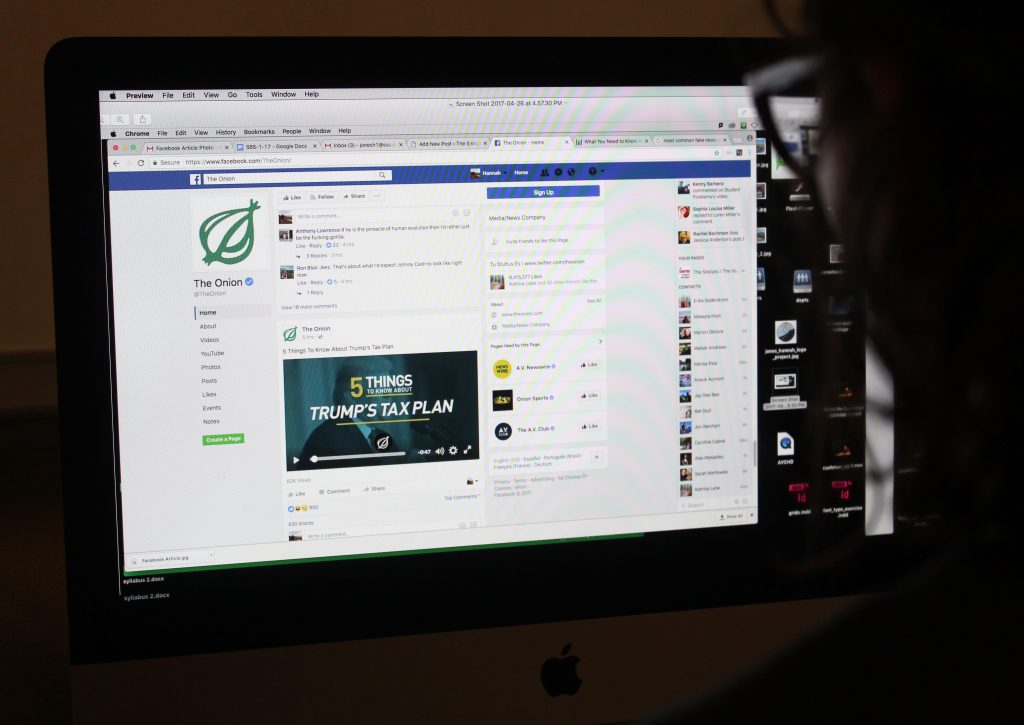
Facebook’s censorship policies surrounding fake news and most notably Facebook Live videos portraying violent or obscene activities, continue to be in the public spotlight as more and more users become at risk for accidentally witnessing abuse or even a murder on their timeline.
On April 16 Steve Stephens shot 74 year-old Robert Godwin Sr. in Cleveland using the popular Facebook Live streaming app as a platform to broadcast the murder.
Stephens took three videos via Facebook that Sunday: one in which he planned the shooting, a second uploaded two minutes later showing Stephens shooting Godwin, and a third in which he confessed to the crime. The first and third videos were broadcasted via Facebook Live.
According to NPR, the video of Stephens shooting Godwin was available for view for three hours after it was posted.
“These kinds of platforms need to take a very close look to see if the public need for transparency really outweighs the pain those kinds of images can cause,” said Southern Oregon University media literacy professor Andrew Gay.
Mark Zuckerberg posted to his profile April 6 of last year that Facebook Live would be the newest addition to the social media site. “Live is like having a TV camera in your pocket. Anyone with a phone now has the power to broadcast to anyone in the world,” said Zuckerberg in his post. Now just over a year later the social media site is dealing with the ethical dilemmas Facebook Live has created.
 The infamous Facebook murder is not the first of it’s kind. In July of last year Diamond Reynolds broadcasted a Facebook live video of her boyfriend Philando Castile being shot in front of her by a Minnesota police officer after a traffic stop. In January of this year a twelve year-old girl posted her suicide via Facebook Live, in which it took Facebook two weeks to take down. Again in January a Facebook Live video was released of a man with special needs being tortured by four individuals.
The infamous Facebook murder is not the first of it’s kind. In July of last year Diamond Reynolds broadcasted a Facebook live video of her boyfriend Philando Castile being shot in front of her by a Minnesota police officer after a traffic stop. In January of this year a twelve year-old girl posted her suicide via Facebook Live, in which it took Facebook two weeks to take down. Again in January a Facebook Live video was released of a man with special needs being tortured by four individuals.
The issues concerning the live feature have introduced the question of ethics and indecency to the foreground. Television news is required to abide by indecency standards under federal law that prohibit “obscene, indecent and profane content from being broadcast on the radio or TV,” according to the Federal Communications Commission. However, Facebook does not fall under the same indecency standards.
Facebook has received scrutiny for both their live videos and false news over the past year, with violent Facebook Live videos and the spread of fake news occurring primarily during the 2016 presidential campaign. As of right now Facebook is reliant mainly on it’s users to report videos and posts as violent. However, Facebook’s vice president of Global Operations, Justin Osofky mentioned that Facebook would consider using artificial intelligence in order to detect graphic videos sooner and take them off their sight quicker, according to Recode an independent tech news publication.“We know we need to do better,” Osofsky said in a blog post in response to the Facebook murder.
While no laws on banning fake news have been made in the United States, Germany recently passed a bill that allows social media sites to be sued for up to 50 million euros if fake news is not removed from a social media site fast enough.
“Facebook is a huge societal influencer. It reaches the largest and most diverse audience ever on the internet. Unfortunately, people believe the first thing they see, and Facebook tends to be a platform where users only see content that they agree with,” said SOU communications major Kayle Blackmore.
On April 6 Facebook stated that they would take efforts to reduce the spread of fake news through offering “tips for spotting false news” on the top of each individual newsfeed. The “tips” were posted in 14 various countries and were left on news feeds for no more than a couple of days.
Facebook’s tips on detecting fake news called for media consumers to be critical of the media they view. Some of the tips include questioning bold or outrageous headlines, paying attention to the timeline of the news story, and following up on the story through other media outlets. “You need to fact check,” said communications major Taylor Moore.
“American media consumers have access to more information than anybody in the history of the planet has ever had and that comes with a responsibility,” said Gay.
As of February this year Facebook has a total of 1.86 billion monthly users, according to the site. While the stories of gruesome Facebook Live broadcasts and dramatic fake news continue to circulate on the popular site, Gay speculates that the site’s influence won’t subside any time soon. “We are not at peak media saturation,” he said.
In order to cope with the influences of media today Gay suggests being more critical of the media. “We have the switch, we have the control and so our job is now ‘if I’m going to go online that’s work now.’ It’s not as safe as it use to be.” said Gay.



